Check out the alphabetical list of dinosaur names beginning with the letter “I”. We’ll look at dinosaur pictures and discuss what their names mean, as well as learn more about dinosaur facts.
Dinosaurs with names that begin with the letter “I”
Ichthyovenator
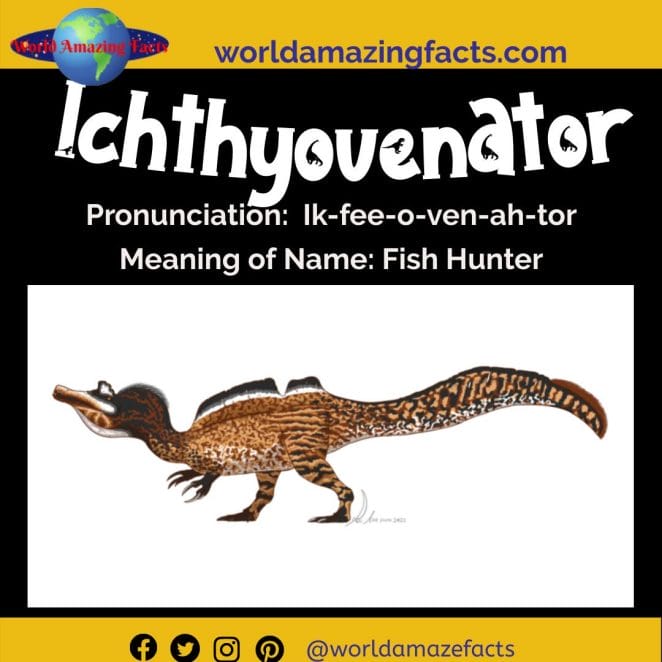
Ichthyovenator is a theropod from the early Cretaceous that was discovered in Lao deposits. The name Ichthyovenator is derived from the Greek and Latin words for fish and hunter, respectively.
It refers to the animal’s probable ichthyosis. The species epithet (laosensis) is derived from Laos, where its fossils were discovered.
Ignavusaurus
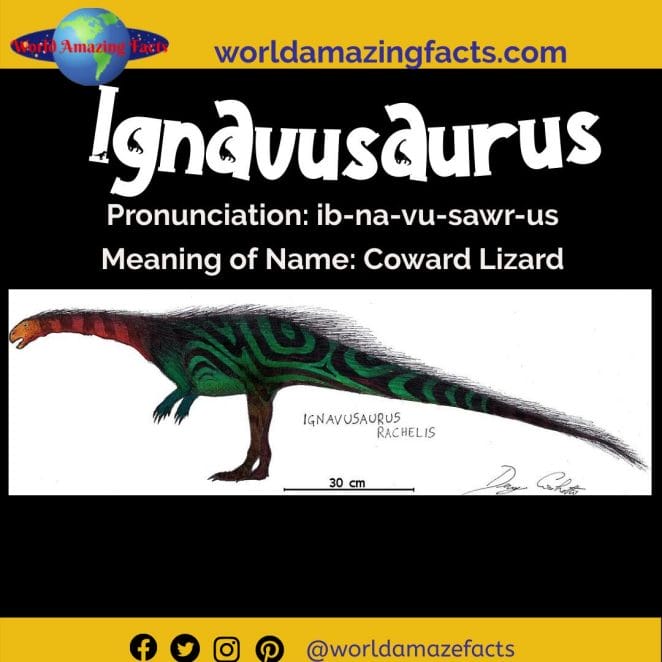
Ignavusaurus was a basal sauropodomorph dinosaur that lived in the Early Jurassic period. Ignavusaurus fossils were discovered in the Upper Elliot Formation, which is thought to be Hettangian in age (around 200 million years ago).
The name Ignavusaurus is a mix of two words: Latin ignavus (coward) and Greek sauros (lizard / lizard), hence it translates as “cowardly lizard.” It was inspired by the location of the holotype, Ha Ralekoala, which means “the place of the coward’s father.” Raquel López-Antoanzas of the Natural History Museum in Madrid is honoured with the species epithet rachelis; Raquel’s name has been replaced by her Latin counterpart Rachel.
Ignotosaurus
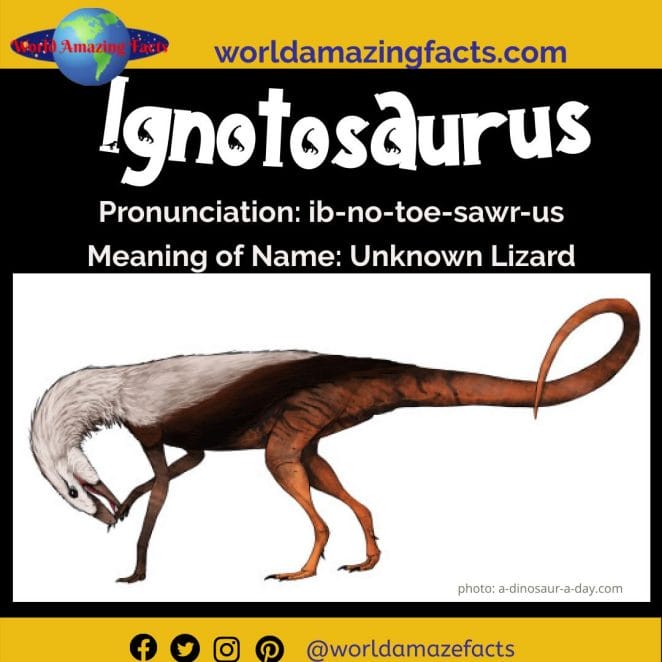
Ignotosaurus is a near relative of the silesaurid dinosaurs that lived around 230 million years ago in Argentina.
The name is derived from the Latin term ignotus, which means “unknown,” the Greek word sauros, which means “lizard,” and the Latin fragilis, which means “fragile.” As a result, Ignotosaurus fragilis can be translated as “the unknown gentle lizard.” This refers to the previously unknown silesaurides in the Ischigualasto Formation, which has been investigated for many years, as well as the delicate iliac plate and femur anatomy.
Iguanacolossus
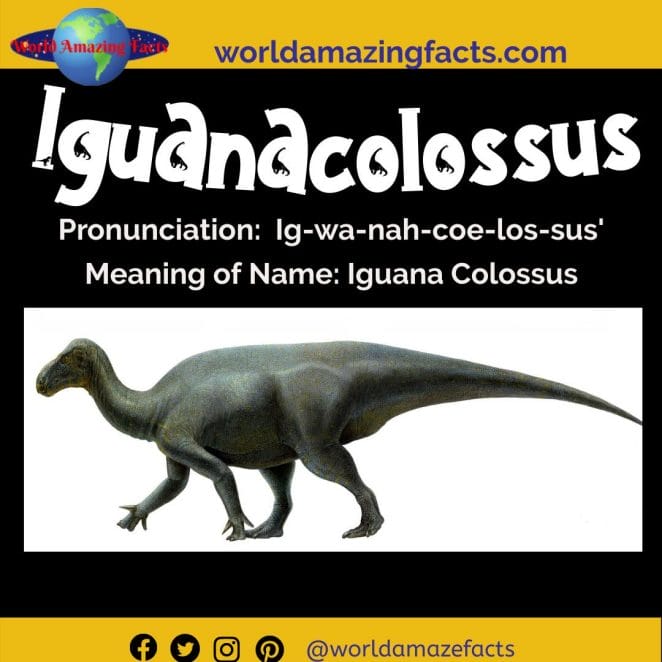
Iguanacolossus was a herbivorous iguanodont dinosaur that lived in what is now Utah, USA, during the early Cretaceous period. It was a huge and powerful ornithopod.
Iguanacolossus derives its name from the Latin words iguana and colossus, which mean “iguana” and “colossus,” respectively. This is a reference to the fact that iguanodont teeth were once compared to iguana teeth, as well as the great size of this animal. The term “mighty” refers to the genre.
Iguanodon
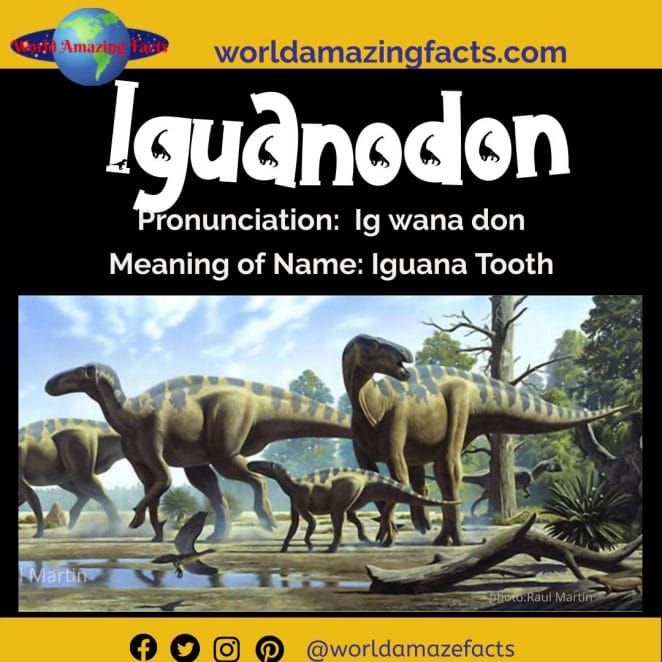
Iguanodon is an ornithopod herbivorous dinosaur. Its name means “iguana tooth” because its teeth are extremely similar to those of herbivorous lizards. Iguanodon is a well-known dinosaur that frequently features in dinosaur documentaries and children’s cartoons.
Iliosuchus
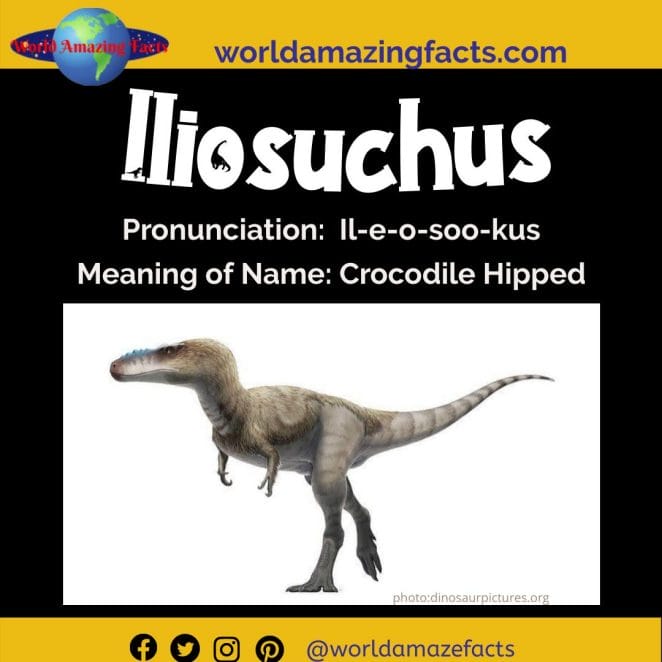
Iliosuchus is a primitive Tetanuran that lived approximately 168 to 166 million years ago during the Bathonian Stage of the middle Jurassic period. It is known from the Stonesfield Slate of Oxfordshire, England, making it one of the earliest Tetanuran species from Europe. Given the presence of the basic Tetanuran group, the Megalosauroids, in the region, it is thought that the group’s ancestor likely originated there.
Ilokelesia
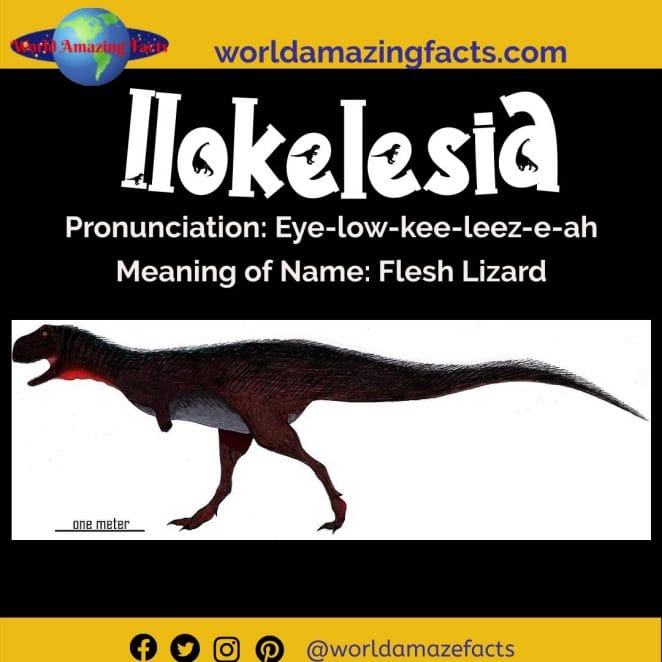
Ilokelesia was a carnivorous theropod that lived in what is now Argentina during the middle Cretaceous epoch. This dinosaur’s fragmentary remains were discovered in Argentina in 1991. Rodolfo Coria and Leonardo Salgado, two well-known Argentine palaeontologists, described the ilokellesia in 2000.
The name Ilokelesia is derived from the Greek terms ilo and kelesio, which mean “flesh” and “reptile,” “lizard” respectively. The entire thing translates as “the carnivorous lizard.” The species name aguadagrandensis refers to Aguada Grande, where its bones were discovered.
Imperobator
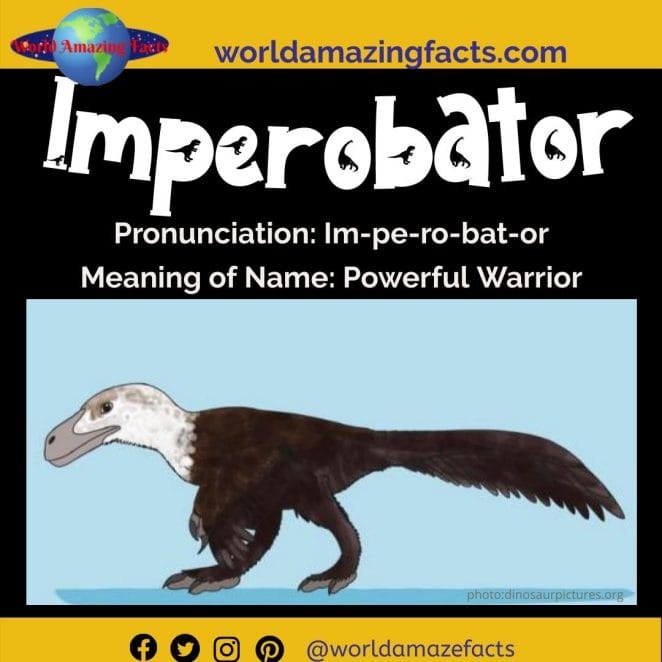
Imperobator is a medium-sized theropod that lived around 71 million years ago in what is now Antarctica. Because the fossil material is scarce (only partial alloys have been discovered), its evolutionary location, appearance, and even size are unknown. It should be assumed that it was a bipedal carnivore with feathers.
Imperobator derives its name from the Latin impero (“imposing”, “majestic”, “mighty”) and the Mongolian bator (“warrior”). The species name references to Antarcticus, the location of the remains.
Incisivosaurus
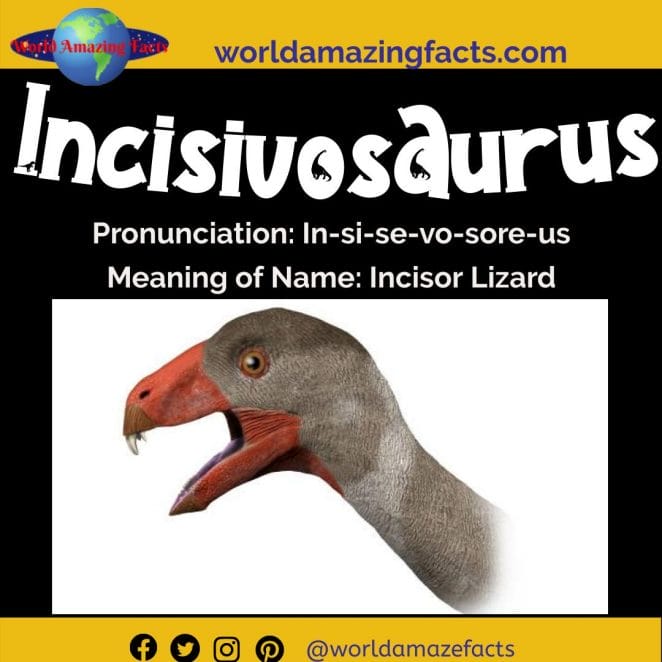
Incisivosaurus is a genus of tiny, possibly herbivorous theropod dinosaurs discovered in the Chinese province of Liaoning during the early Cretaceous Period.
The name Incisivosaurus refers to the front teeth protruding from the mouth (a characteristic feature of this theropod), while there were several dozen small teeth in the depths of the jaws: 26 in the upper and 06-18 in the lower. Furthermore, the teeth of this reptile were worn like those of today’s rodents, implying that Incisivosaurus was a vegetarian. The genre was named after Jacques Gauthier, a pioneer in phylogenetic systematics.
Indosaurus
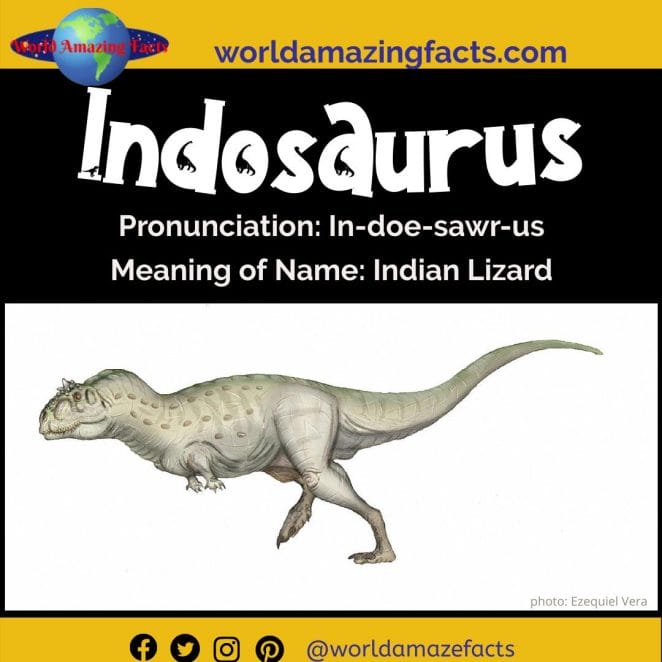
Indosaurus is one of many varieties of poorly understood Abelisaurids that lived in what is now India during the Late Cretaceous Maastrichtian period. Originally thought to be an Allosauroid, it is now thought to be a member of the Abelisauridae. Many researchers classified it as a nomen dubium because to the lack of the fossil evidence.
The name Indosaurus is derived from the country where its remains were discovered and translates as “Indian lizard” from Greek Indos (India) and sauros (lizard). The genre name pays homage to palaeontologist Charles Matley.
Indosuchus
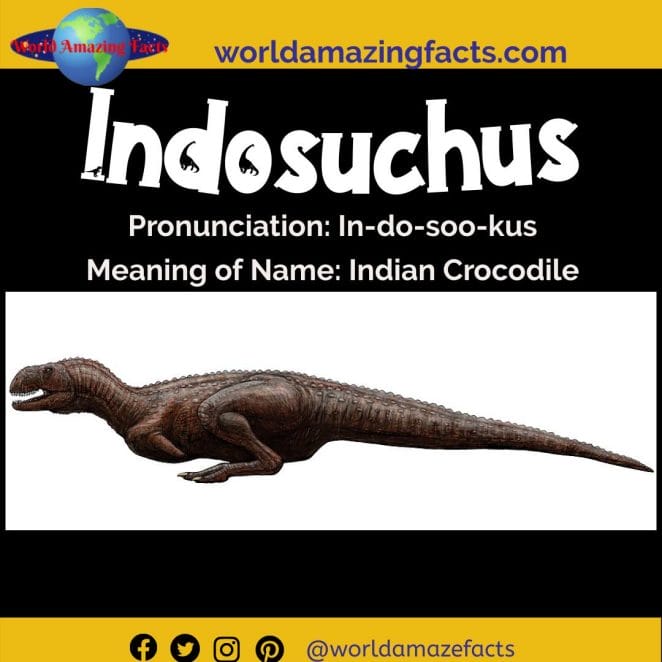
Indosuchus is a poorly understood Abelisaurid that lived in Madhya Pradesh, India, during the Late Cretaceous period. Indosuchus is one of many species of this theropod family described in the Lameta Formation. Previously classed as an Allosaurid or Tyrannosaurid, it is now identified as an Abelisauride. Many experts regarded Indosuchus to be a nomen dubium due to the scarcity of fossil material.
The name Indosuchus is derived from the country where the remains of Indosuchus were discovered and means “Indian crocodile” from the Greek Indos (India) and soukhos (crocodile). From Latin, a genre epithet means “robber.”
Ingentia

Ingentia was one of the first sauropods to exist in what is now South America during the Late Triassic period. It grew to enormous proportions despite its rudimentary body plan and absence of traits previously assumed to be adaptations to gigantism.
Ingentia is a Latin word that means “large” or “giant.” Prima is a genre designation that signifies “first.” The entire thing is thus related to the huge body sizes obtained in the early phases of dinosaur evolution.
Invictarx

The Invictarx is a four-legged, armoured herbivorous dinosaur from the late Cretaceous period of North America. Invictarx belonged to the Nodosauridae family, which differed from the related Ankylosauridae in several ways, including the lack of a tail club. The remnants of Invictarx were unearthed between 2011 and 2015, and a scientific description was published in 2018.
The name Invictarx is derived from the Latin words invictus (“invincible”) and arx (“fortress”, “fortress”). This is a reference to bone armour, which is extremely effective against predators. The species name zephyri is derived from the Latin zephyrus (“west wind”), which refers to the weather conditions that typically exist when the dinosaur’s remains are discovered. The entire phrase translates as “the unbeatable fortress of the west wind.”
Irisosaurus
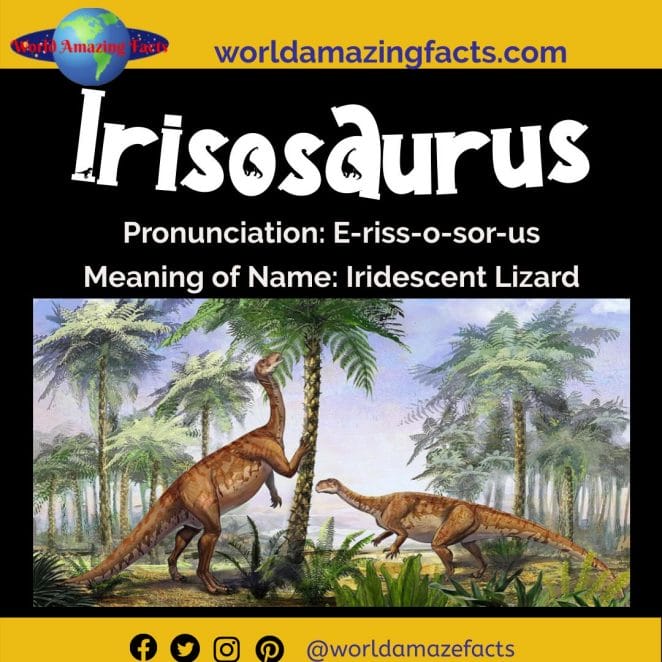
Irisosaurus was a sauropodomorph that lived in what is now China during the early Jurassic period. Claire Peyre de Fabrègues and colleagues named and characterised Irisosaurus in 2020.
Irisosaurus is the generic name for the famed opal clouds of Yunnan Province. The Yimen district is referenced in the genre epithet.
Irritator
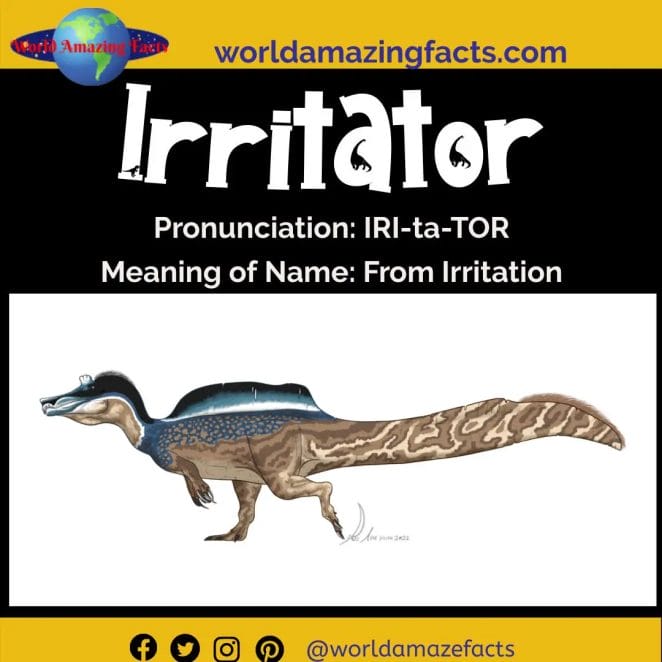
The genus Irritator belongs to the Spinosauridae family of Early Cretaceous theropods. Irritator was born in what is now Brazil. Angaturama limai, another spinosaurid, has also been discovered in the same settlements. It could be the same species as the Irritator.
The irritator’s skull is the most complete of any known spinosaurid, providing important information about the structure and palaeobiology of this group of theropods. The Irritator skull was discovered in the strata of the Brazilian Santana Formation in 1996 by fossil collectors who plastered it to make the specimen look more complete. The subsequent removal of the manufactured layers was time-consuming and labor-intensive.
As a result, the dinosaur’s name implies “arduous / laborious.” The second part of the name challengeri was inspired by Prof. Challenger from AC Doyle’s novel “Lost World.”
Isaberrysaura
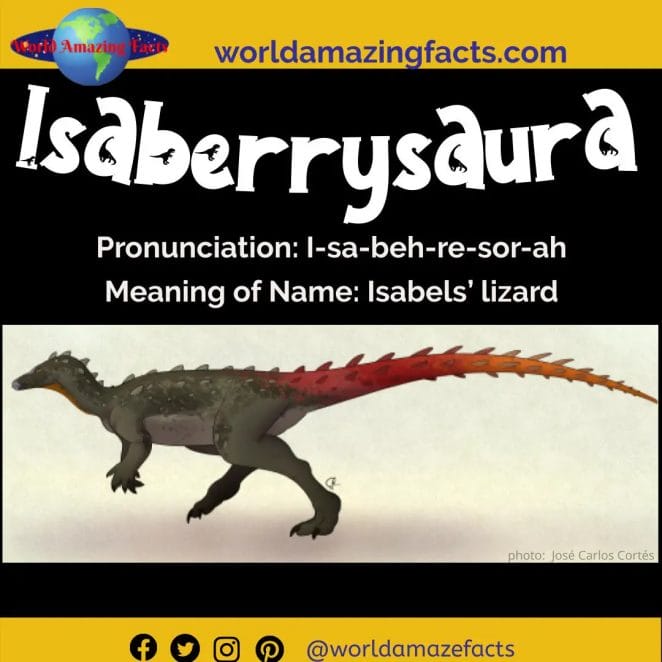
Isaberrysaura is the name given to a primitive example of Neornithischia that lived in what is now Argentina during the Middle Jurassic period, approximately 170 million years ago.
The generic name Isaberrysaur commemorates Isabel Valdivia Berry, who discovered the dinosaur. The genre is most likely named for the location where it was discovered – the site and formation of Los Molles.
Isanosaurus
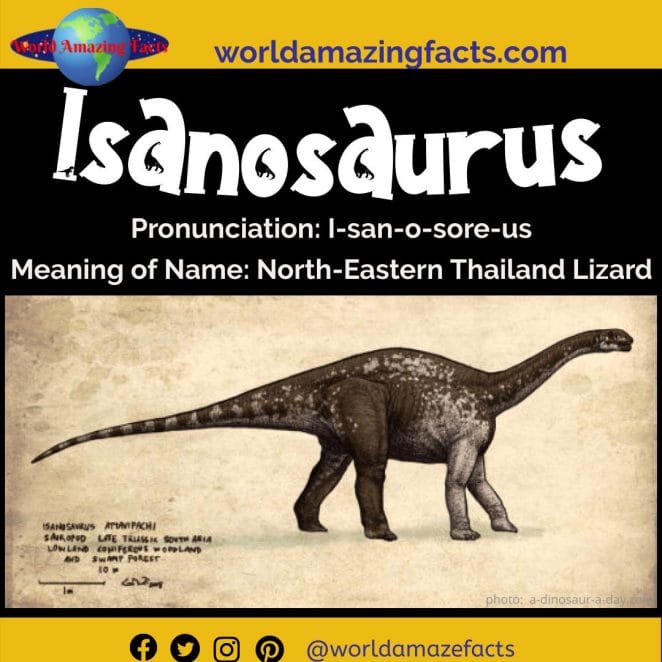
One of the earliest sauropods was Isanosaurus. At the time of its scientific description (2000), Isanosaurus was thought to be the group’s oldest member. However, we now know that sauropods, including Antetonitrus, lived far earlier.
In the Late Triassic period, Isanosaurus lived in Southeast Asia (today’s Thailand). Isanosaurus most likely fed on rapidly growing flora that was inaccessible to most dinosaurs of the time, as well as reptiles from other orders.
Isanosaurus is a genus name that means “Isan lizard” (Northeast region of Thailand ). The species name attavipachi, on the other hand, honours P. Attavipach, the former director general of Thailand’s Department of Mineral Resources.
Isasicursor
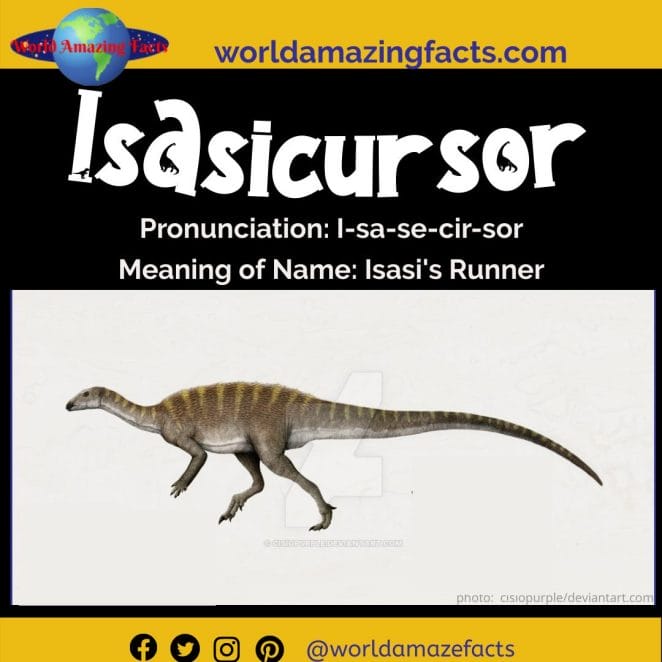
Isasicursor was a medium-sized herbivorous dinosaur that existed in Argentina during the Late Cretaceous period. A team of palaeontologists led by Fernando Novas described Isasicursor in 2019. Isasicursor most likely belonged to the enigmatic clade Elasmaria, whose representatives could be iguanodons, primitive ornithopods, or even not at all.
Isasicursor is called for a technician named Marcelo P. Isasi, who discovered the animal’s remains. Cursor, the second component of the name, means “runner” in Latin. The genre is named after the Argentine region of Santa Cruz.
Read also: A-Z list of Dinosaur Names and Pictures





GIPHY App Key not set. Please check settings